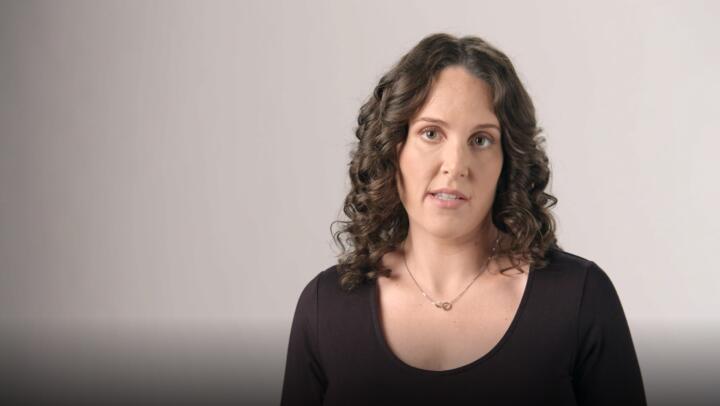What is a brain tumor?
A brain tumor is an abnormal growth of tissue in the brain. Brain tumors may be classified as either benign (noncancerous) or malignant (cancerous). Most brain tumors are benign; fewer than 30% of brain tumors are diagnosed as malignant. A benign tumor does not contain cancer cells and usually, once removed, does not recur. Most benign brain tumors do not invade surrounding tissue.
Malignant brain tumors contain cancer cells. Malignant brain tumors are usually fast-growing and invade surrounding tissue. These tumors very rarely spread to other areas of the body, but may recur after treatment. Whether benign or malignant, an enlarging brain tumor is dangerous because it can damage healthy brain tissue—areas that affect your speech, your mobility, even your thoughts.
Brain tumors are either primary or secondary tumors. Primary tumors begin in the brain tissue itself. Primary brain tumors are relatively rare overall. In the United States, a person has a less than 1% lifetime risk of developing a primary cancerous brain tumor. (For comparison, the risk is 6% for lung cancer, which is among the most common cancers.)
Secondary, or metastatic brain tumors result from tumors that begin to grow in another part of the body, and then spread to the brain through the bloodstream. Common types of cancer that can travel to the brain include lung cancer, breast cancer, melanoma (a type of skin cancer), thyroid cancer and colon cancer. Some metastatic brain tumors appear many years after the primary cancer. Others develop so quickly that they are identified before the primary cancer. In other cases, the body is able to destroy the primary cancer but not the metastatic brain tumor. When this occurs, the primary cancer can be unknown.
Receiving a brain tumor diagnosis can be very unsettling, especially if the condition affects your child. Brain tumors represent the most common type of solid cancer in children. (Leukemias, cancers of the blood and bone marrow, are the most common childhood cancers overall.) However, the abnormal tissue growth of both cancerous and non-cancerous (benign) brain tumors can affect people of all ages.
Brain tumor symptoms vary depending on the area of the brain affected by the mass. Symptoms can be very general, such as headache or fatigue, or very specific, such as sudden vision changes and seizures. Even then, many signs of a brain tumor can be common symptoms of other conditions.
See your doctor for any unusual or persistent symptoms, including headache, fatigue, nausea, and vomiting, so you can receive an accurate diagnosis as promptly as possible. Seek immediate treatment (call 911) for serious symptoms including loss of consciousness, change in vision, muscle weakness, personality changes, speech difficulty, or seizure—if the person has never had a seizure previously or is having trouble waking up from the seizure.
If your doctor diagnoses a brain tumor, a variety of effective treatments are available. The specific course of therapy will depend on the tumor’s location, whether it is malignant or benign, and how quickly it is growing or spreading.
What are the different types of brain tumor?
Brain tumors are first classified into primary or secondary tumors. Primary brain tumors begin in the brain, while secondary, or metastatic brain tumors develop from the spread of cancer that originated elsewhere in the body, such as lung, breast or colon cancer.
Common types of primary brain tumors
There are more than 100 different types of primary brain tumors. However, the most common include:
Gliomas, the most common type of primary brain tumor. Gliomas comprise several subtypes, ranging from low-grade to more aggressive tumors (the tumor readily invades surrounding brain tissue).
Glioblastomas, a fast-growing type of glioma. Glioblastoma is the most aggressive form of brain cancer in adults, famously fought by Sen. John McCain, Sen. Ted Kennedy, and Beau Biden, son of President Joe Biden.
Astrocytomas, which originate in star-shaped cells in the cerebrum known as astrocytes. Astrocytomas are the most common type of glioma, and they can vary in severity and how quickly they spread. They often are treated through surgery, and have a relatively positive survival rate for younger patients.
Meningiomas, slow-growing tumors that arise in the meninges, the membrane surrounding the brain. Meningiomas are the most common type of brain tumor and are usually benign.
Pineal and pituitary tumors, tumors that begin in the pineal or pituitary glands. These types account for about 14% of brain tumors and most are benign. However, they can cause an increase in hormone production and often require hormone therapy.
Primary central nervous system lymphoma, a cancer that begins in the lymphocytes, a type of white blood cell in the lymphatic system, that can spread to the brain, eyes, meninges, or spinal cord.
- Acoustic neuroma, or vestibular schwannoma, a type of benign tumor that forms in the Schwann cells around the nerves in the ear. As these tumors grow, they can affect hearing and balance, and eventually put pressure on the brain stem and cerebellum.
Secondary brain tumors are named for the original cancer site, which is important to know in order to maintain an accurate family medical history. If someone in your family had lung cancer that spread to the brain, he or she did not have brain cancer. Instead, the condition was metastatic lung cancer of the brain. This distinction can be crucial for your doctor as it relates to your own individual medical history and risk factors.
What are the symptoms of a brain tumor?
A brain tumor can cause a wide variety of signs and symptoms. They vary depending on the tumor’s location, size, and how fast it is growing. Slow-growing tumors can cause gradual symptoms that you may not notice for some time. When tumors are growing quickly, symptoms can appear rather suddenly. Symptoms can also be very general or very specific.
Brain tumor symptoms can include:
Balance problems, weakness, or paralysis
Changes in vision, hearing, speech, touch, emotions, personality or judgment
Difficulty with fine motor skills, swallowing, or using facial muscles
Fatigue, headache, or head pressure
Memory problems
Nausea or vomiting
- Seizures
It is important to see your doctor if you have any of these symptoms that persist or cause concern. Other conditions share many of these same symptoms. Getting a timely diagnosis offers the best chance of successfully treating the underlying cause.
If any of these symptoms appear suddenly, seek immediate medical attention (call 911). They may be a sign of a serious or potentially life-threatening condition, such as a stroke.
What are the grades of a brain tumor?
Primary brain tumors behave differently than cancers elsewhere in the body, and therefore doctors do not stage them in the same way they diagnose most other cancers.
Cancers in other areas of the body are staged based on the location and size of the tumor, as well as how it has affected lymph nodes or spread beyond the original site. Because primary brain tumors do not tend to spread or involve the lymph nodes, doctors instead grade primary brain tumors based on how quickly the tumor grows, the appearance of tumor cells, and the potential for recurrence.
The World Health Organization outlines four grades for brain tumors:
Grade I: a benign, slow-growing tumor in which cells appear almost normal under a microscope. Grade I tumors often can be removed successfully through surgery.
Grade II: a relatively slow-growing tumor with cells that appear slightly abnormal under a microscope. Grade II tumors can sometimes spread to nearby areas of the brain or come back (recur) after treatment as a more severe tumor.
Grade III: a cancerous (malignant) tumor with abnormal-looking cells that reproduce quickly. Grade III tumors often spread within the brain and are more likely to recur as higher-grade tumors.
- Grade IV: an aggressive, malignant tumor that spreads quickly to nearby parts of the brain. Grade IV tumors create new blood vessels, which allow them to grow more rapidly. The centers of rapidly growing tumors also have areas of dead cells, called necrosis.
Doctors will evaluate many factors, including the grade of the tumor and a person’s individual medical history, to determine a course of treatment.
What causes a brain tumor?
Doctors do not fully understand what causes brain tumors. Both cancerous and noncancerous brain tumors are the result of abnormal cell growth. Errors or mutations in a cell’s DNA cause this abnormal growth. However, it is not entirely clear how or why these errors occur and trigger tumors. It is likely that a combination of environmental and genetic factors play a role in their development.
What are the risk factors for a brain tumor?
In most cases, the cause of a brain tumor is unknown. However, several factors increase a person’s risk of developing a brain tumor. Having risk factors does not mean you will get a brain tumor. And many people with brain tumors have no known risk factors. Even if you have risk factors and develop a brain tumor, doctors can rarely determine the exact or specific trigger of abnormal growth and tumor development.
Brain tumors tend to occur more often in children and older adults. Other risk factors for brain tumor include:
Caucasian race
Exposure to ionizing radiation, which is the kind in X-rays
Family history of a brain tumor. About 5 to 10% of brain tumors are hereditary or genetically linked.
Infection with EBV (Epstein-Barr virus) or CMV (cytomegalovirus)
- Male gender. However, some types of brain tumors are more common in women.
Reducing your risk of brain tumor
Reducing the risk of a particular disease involves controlling risk factors that you have the power to change. Unfortunately, the risk factors for a brain tumor are generally not modifiable. If you have a family history of a brain tumor, talk with your doctor about your risk or the risk for your child. Ask about specific monitoring recommendations to find early warning signs.
How do doctors diagnose a brain tumor?
Because the symptoms of a brain tumor can be similar to those of many other common conditions, doctors evaluate several factors to accurately determine if a brain tumor may be the cause.
If you are experiencing symptoms, such as headache, vision changes, speech difficulty, loss of balance, confusion, or personality changes, your doctor or licensed healthcare practitioner will ask you several questions related to your symptoms, including:
How long have you been experiencing symptoms? Does anything improve or worsen these symptoms?
Have these symptoms changed over time; for example, have they become more frequent or more severe?
Have you recently experienced any head trauma?
Have you been diagnosed with any other neurological conditions?
- Do you have a family history of neurological conditions or cancer?
Tests to diagnose a brain tumor
If your doctor suspects a possible brain tumor, you will likely undergo a series of tests to diagnose and evaluate the tumor, if present.
Tests to diagnose a brain tumor include:
Neurological exam to test your memory, mental function, reflexes, and senses
Imaging tests, such MRI (magnetic resonance imaging) or CT (computed tomography), to determine the location and size of the tumor
Biopsy, in which a small amount of tumor tissue is removed and analyzed in a lab to determine the type of tumor and whether it is malignant. Biopsy samples are often collected during surgery to remove part or all of the tumor.
- Stereotactic brain biopsy, a procedure that uses 3D imaging to pinpoint the best area to remove a tissue sample from a tumor that is not operable
In imaging scans, a benign brain tumor usually exhibits smooth, well-defined edges that do not infiltrate (go into) the surrounding tissue. A cancerous brain tumor may not appear as a well-defined mass on MRI, or it may be evident from subsequent imaging exams that the tumor is growing rapidly, an indicator of cancer.
Your doctor will discuss your individual diagnosis with you in the context of your medical history and work with you to build an appropriate treatment plan.
What are the treatments for a brain tumor?
There is no one standard treatment for a brain tumor because each tumor—and each person—is different. There are many factors that contribute to brain tumor treatment decisions. This includes the type of tumor, whether it is cancerous or not, its location, its size, and how fast it is growing. Your age and overall health are also considerations.
Surgery is often the first step in the treatment of primary brain tumors, when possible. The goal is to remove as much of the tumor as possible while maintaining neurological function.
Additional brain tumor treatments include:
Chemotherapy to kill or stop the growth of tumor cells
Radiation therapy to destroy tumor cells, including stereotactic radiosurgery using a highly focused form of radiation or proton therapy
Targeted therapy to attack tumor cells using specific markers|
- Tumor treating fields (TTFs) or alternating electric field therapy, in which a medical device with electrodes is placed on the scalp to deliver mild electrical currents to disrupt tumor growth. TTFs are an approved treatment for glioblastoma.
Clinical trials are also being conducted on immunotherapy treatments for glioblastoma. This therapy reprograms the body’s own immune system to fight cancer cells. Early trials have shown promise and experts believe immunotherapy could be a significant advance in the fight against brain cancer.
During your treatment, you may also take medications to address symptoms and manage side effects. Medications that may be included in brain tumor treatment include:
Antiseizure medications, to treat and prevent seizures associated with intracranial pressure
Antibiotics, to treat and prevent infections
- Steroid medications, to treat and prevent swelling in the brain
Brain tumor recovery also can include a variety of therapies to regain or strengthen lost function, including physical therapy, occupational therapy, speech therapy, or educational tutoring for children.
The treatment options for secondary brain tumors may depend on how widely the primary cancer has spread. For instance, brain surgery may not be effective for a person with lung cancer that has metastasized to several other sites throughout the body, so the treatment plan may include other options, like palliative care.
In other cases, the primary source of the cancer causing the brain metastasis must be addressed in conjunction with the tumor. Metastatic lung cancer of the brain, for example, will require a comprehensive treatment plan that addresses the primary lung cancer as well as the brain tumor.
Talk with your doctor about the benefits and side effects of your treatment options, in the context of your personal goals. Consider getting a second opinion if you need help making a treatment decision. You may also want to ask your doctor about clinical trials. If you qualify to participate, a clinical trial can offer access to experimental and cutting-edge treatments.
Following successful brain tumor treatment, you will require ongoing follow-up care. Your doctor will monitor your physical, mental and neurological health, and you may undergo regular imaging scans to watch for any tumor recurrence.
What are diet and nutrition tips for brain tumor patients?
Living with a brain tumor can have a significant impact on your relationship with food. Patients often experience nausea, vomiting, and loss of appetite, whether as symptoms of the tumor itself or side effects of treatments like chemotherapy and radiation. However, proper nutrition is essential for patients before, during and after brain tumor treatment. Eating well improves your ability to tolerate treatment, and certain foods can help boost the immune system and alleviate symptoms.
Experts recommend these diet and nutrition tips for people being treated for a brain tumor:
Avoid foods that are high in fat and sugar, as these can worsen digestive symptoms.
Consume 6 to 8 small meals a day, rather than three large ones. Taking in smaller amounts of food can help combat nausea and dry mouth.
Eat the rainbow: Focus on fresh fruits and vegetables, including berries, carrots, citrus fruits, sweet potatoes, and dark, leafy greens.
Focus on fluids: Drink at least 8 glasses of water a day, and even more when going through chemotherapy treatments that can lead to dehydration. If water has a metallic or bitter taste due to your symptoms, try infusing water with fresh fruits.
Include plant-based foods with phytochemicals, nutrients that have been studied for their immune-boosting effects. Good sources of phytochemicals include apricots, berries, beans, broccoli, carrots, cauliflower, coffee, garlic, leeks, sweet potatoes, and whole grains.
- Try new flavors to adapt to changes in taste or smell that may result from brain tumor treatment. If you are experiencing reduced or no sense of taste, try adding fresh herbs, hot sauce, lemon, and spices to enhance the flavor of your food. If you have a bitter or metallic taste in your mouth, try switching to plastic silverware or chopsticks; eating non-meat proteins like eggs, tofu or beans; and seasoning with chili, garlic or onion powder.
Some researchers have explored the benefits of a keto diet for brain tumor treatment. A keto diet focuses on low-carb, high-fat foods in order to encourage the body to burn fat for energy rather than relying on sugar. One theory suggested that because cancer cells consume sugar for energy, depriving them of sugar through a keto diet would prevent them from growing. However, research has not shown this to be true, and in at least one study, patients and their caregivers found it very difficult to maintain a strict keto diet.
Your care team can provide guidance on nutrition during brain tumor treatment, including referring you to a registered dietitian who can help you plan meals that are healthy, manageable and satisfying.
How does a brain tumor affect quality of life?
A brain tumor is a life-changing diagnosis. Whether benign or malignant, a brain tumor raises many questions about the future and creates a sense of uncertainty that many patients never quite overcome, even after successful recovery.
The symptoms of a brain tumor and side effects of treatment can have profound effects on daily life. Physical changes such as diminished senses, muscle weakness, and neurological damage can make simple tasks difficult. The mental symptoms of brain tumors, such as memory loss, confusion, or change in personality, can make it difficult for people to work, care for family members, or enjoy social outings. People being treated for a brain tumor may lose independence, including the ability to drive, and eventually require full-time caregiving.
A brain tumor, particularly a malignant one, can raise difficult questions about the future and can put patients on an emotional rollercoaster. Even for those who successfully recover from a brain tumor, the emotional effects can be long-lasting. Anxiety over possible tumor recurrence can be constant, and the physical impacts of brain surgery and other treatments often become a “new normal” for many people.
It is important to remember that there is no “right” way to face a brain tumor. Your treatment plan, your experience, and your prognosis are all unique to you. However, there are many resources available to provide support from others who share your diagnosis, either through in-person or online groups. Emotional or spiritual counseling may also be helpful as you make treatment decisions and cope with challenging symptoms.
Together with your care team, you can work to set treatment goals and maintain the highest possible quality of life for you and your loved ones.
What are the potential complications of a brain tumor?
A brain tumor can damage brain tissue and cause problems that may be permanent. Some tumors are more likely to cause problems than others due to their location. As with other tumors, a primary concern with brain tumors is long-term survival and quality of life.
Treatments for brain tumors, including surgery, chemotherapy and radiation, can also have long-term complications and effects.
Potential complications of brain tumors and brain tumor treatment include:
Cognitive decline
Fatigue
Hearing loss
Malnutrition
Memory loss
Paralysis
Seizures
Speech difficulties
Stroke
- Weight gain (from steroid treatments)
What is the survival rate and prognosis for a brain tumor?
A person’s individual prognosis with a brain tumor greatly depends on all of the following:
Specific type of tumor (for example, meningioma, glioma, glioblastoma) and grade (I, II, III, IV)
Extent of the disease
Size and location of the tumor
Presence or absence of metastasis
The tumor’s response to therapy
Your age, overall health, and medical history
Your tolerance of specific medications, procedures, or therapies
- New developments in treatment
As with any cancer, prognosis and long-term survival can vary greatly from person to person. Prompt medical attention and aggressive therapy are important for the best prognosis. Continuous follow-up care is essential for a person diagnosed with a brain tumor. Side effects of radiation and chemotherapy, as well as second malignancies, can occur in survivors of brain tumors.
With brain tumors, doctors talk about survival in terms of the five-year relative survival rate. A relative survival rate looks at the percent of people with a disease who are still alive compared to people without the disease. A five-year relative survival rate makes this comparison for people five years after diagnosis. For example, a 65% five-year relative survival rate means someone with a disease is 65% as likely as someone without it to still be living five years after diagnosis.
The five-year relative survival rate for brain tumors varies greatly depending on the type of tumor and a person’s age. For meningiomas, the rate is fairly high, even for older adults. For people ages 55 to 64, it is about 74%. For glioblastomas, the rate is low. For adults ages 20 to 44, the rate is 22% and it decreases with older age.
It is important to know that survival rates are only estimates, and many statistics may be based on older data. These rates cannot tell you how long you will survive with a brain tumor. Cancer treatment is a rapidly evolving field, and as a result, survival rates are improving for many cancers, including brain tumors. Other factors, such as your overall health and the tumor’s response to treatment, play a role in your outlook. Your doctor is the best resource for information on your individual prognosis.
Brain tumor awareness
About 700,000 Americans are currently living with a primary brain tumor, with more than 84,000 people diagnosed each year. Pediatric brain tumors are the leading type of solid tumors affecting children and teens under 19. (Leukemia is the leading pediatric cancer.)
Groups such as the American Brain Tumor Association and National Brain Tumor Society are working to raise awareness of brain tumors and increase funding for brain tumor research and treatment advances. May is Brain Tumor Awareness Month, marketed as “Gray May” for the ribbon color associated with brain tumor awareness. September is Childhood Cancer Awareness Month, symbolized with a gold ribbon.


















